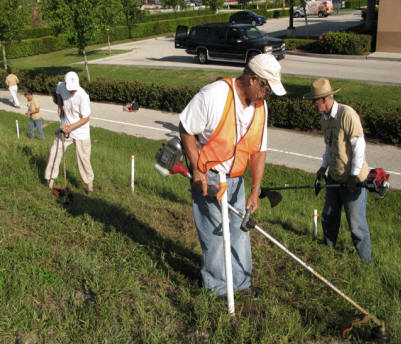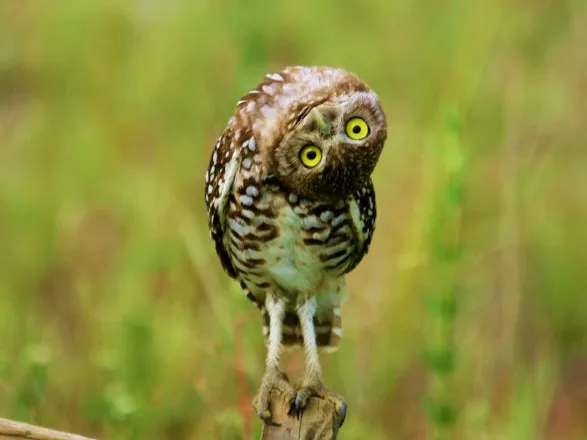Cleaning an Owl Burrow
These are instructions for weed maintenance around an owl burrow August through January, NOT during nesting season, which takes place February through July.
Wear long pants, socks and closed shoes to keep out fire ants. Wear eye protection while weed-wacking.
- Approach the burrow slowly from the street.
- Check for owls before getting too close.
- If you see owls, before getting close enough to cause them to take flight, look for any cars in the vicinity. If so, wait until there are none moving nearby.
- Look in the sky or in trees for any hawks. If you spot one, do not clean any burrows in that area. Come back later.
- Notice whether the owl(s) fly off or go into the burrow. If it flies off, watch where it goes, there could be a new burrow that has not been marked.
- If you find an unmarked burrow, please put something near it to mark it and call Cape Coral Friends of Wildlife to stake the new burrow.
- If the owl goes into the burrow, be extra careful around the burrow entrance.
The owls may bob up and down when you get close. This is normal behavior indicating that they are getting nervous. They will usually fly off at this point if you keep approaching. Very protective owls may screech and puff their feathers to indicate major displeasure with your being too close. At this time of year (July to Feb.), it is still OK to approach and they will fly off or go into the burrow. Burrowing Owls are not dangerous. They will not intentionally attack a human being.
The most important thing to remember is never walk or stand on top of the burrow itself! Owl burrows can extend for up to 10 feet in any direction. The PVC pipes are used to keep lot mowers and people off the burrows. The burrows can be very shallow and could easily collapse and owls could be trapped inside.
If you ever accidentally collapse a burrow (it can happen even to the most careful people), please contact Cape Coral Friends of Wildlife IMMEDIATELY (239 980-2593). Someone will come out and check the burrow and try to repair it.
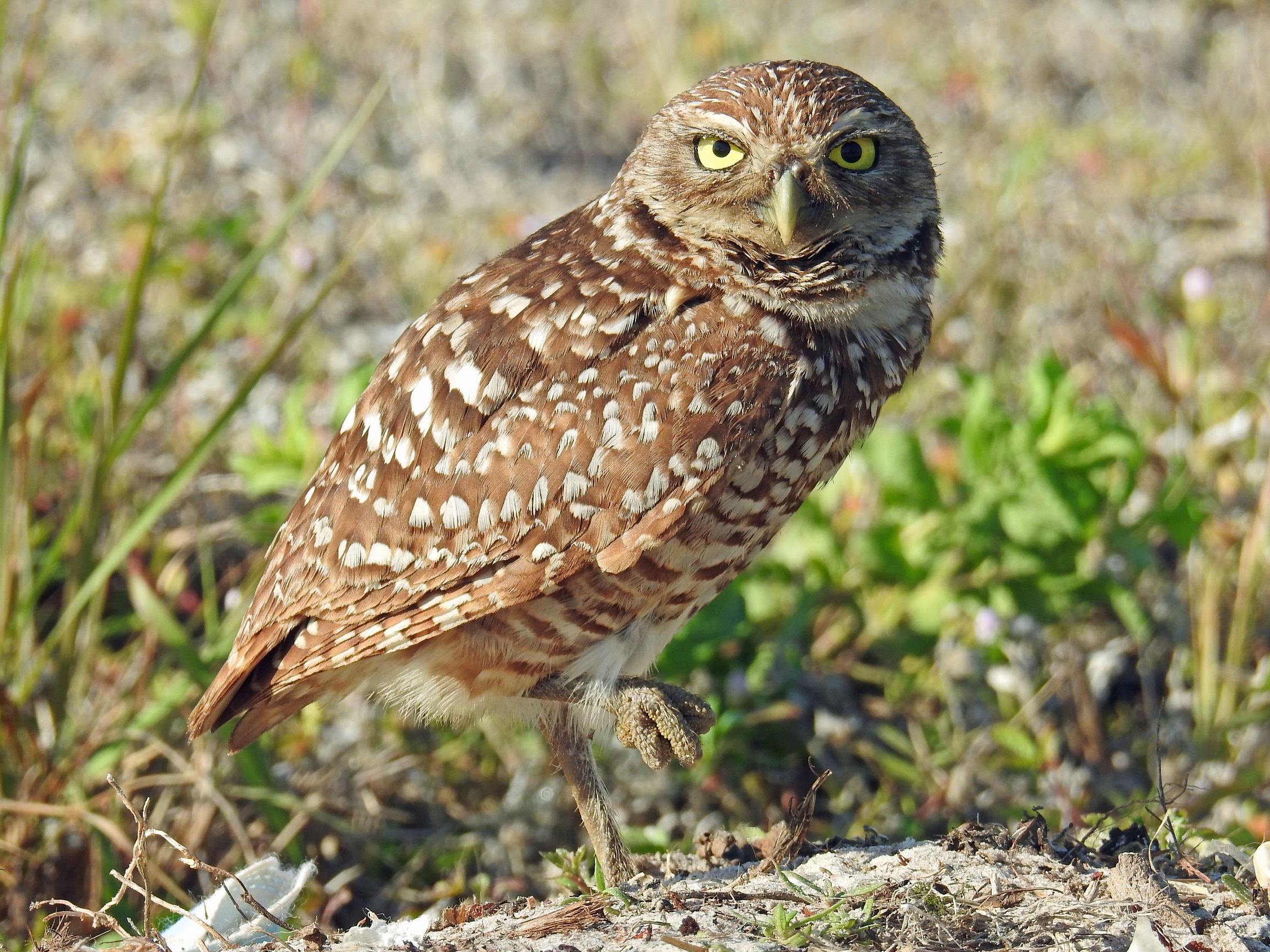
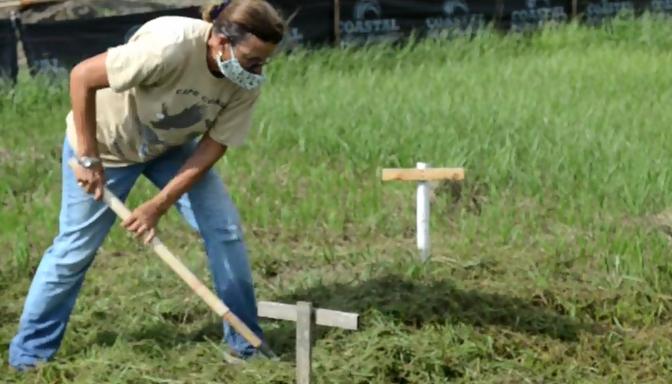
Using a weed wacker to trim a burrow
Start to weed-wack, staying outside the PVC stakes. Cut an area about 3 feet wider than the staked area to meet the lot mower cutting area.
Be aware that there may be multiple burrows within one staked area, or multiple openings for the same burrow.
Stay outside of the PVC stakes and try to determine the direction of each burrow. If necessary, carefully walk up to the burrow (see diagram) to determine the direction of the opening. If it is difficult to determine, you can slowly and carefully put a pipe or handle part way into the burrow opening.
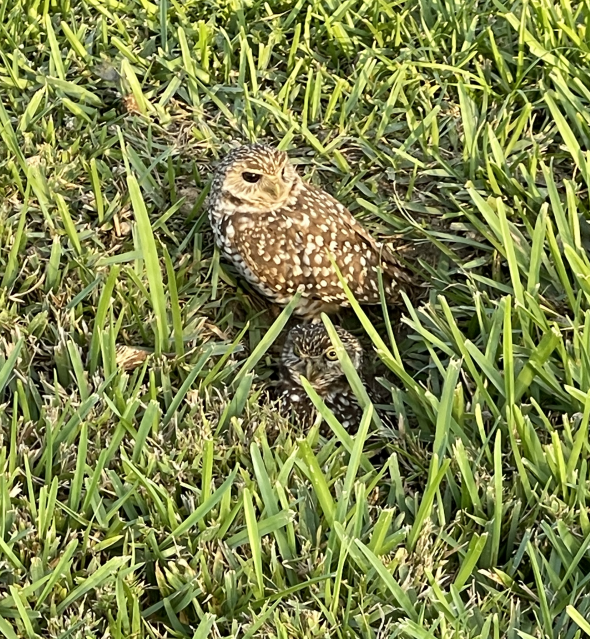
Once you have determined where the burrow is going, weed-wack the entire area enclosed in the PVC stakes, staying off the burrow itself. Weed-wack the burrow area by reaching across it from both sides.
You can cut the weeds as low as possible. Burrowing Owls put their burrows in the sand, they don’t care much for the weeds. If there is a plant that can provide shade that is not too close to the burrow entrance, you can leave it.
The most important area to keep clean is the burrow entrance. You can stand on the mound of sand that the owls dug out of the burrow without a problem. Cut the weeds very short around the burrow entrance. If the owls can get in and out of the burrow, they may not find a need to dig another burrow, even if the rest of the area is high in weeds. If you know an owl is inside the burrow, you may want to cut close around the hole with a hand clipper.
Pull all weed-wacker clippings and attached weeds out of the burrow entrance as far as you can reach, but never use your bare hands (lots of creatures other than owls live in the burrows). If you find any rocks or trash, please pull that out also (between July and Feb.).
Never pull weeds out of the top of the burrow itself (only inside the hole). The roots are holding the burrow together and pulling them out could also collapse the beginning of the burrow. Always use the weed-wacker or a hand clipper on this area.
Hammer in any loose PVC stakes or perches. If you find missing PVC or perches, please contact Cape Coral Friends of Wildlife.
If the burrow has filled in with sand or because of flooding, try to dig the opening out again. There may still be a visible mound of sand on one side. Dig down at an angle on the opposite side from the sand mound. Feel around to see if you can connect up with a tunnel that might still exist further in. The sand you remove can be put on top of the mound of sand already there in front of the hole.
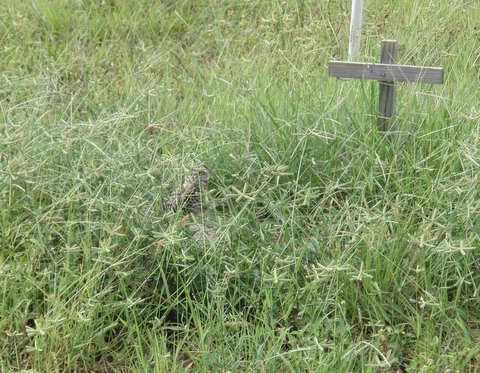
burrowing owl near overgrown nest
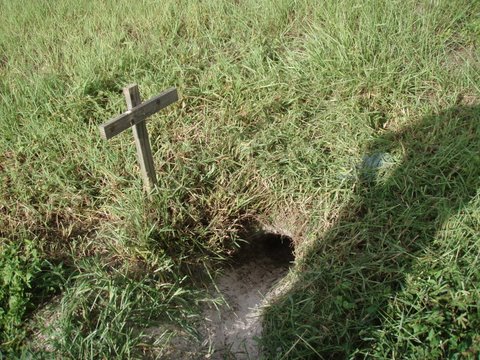
nest after cleaning
If you decide you can no longer maintain a burrow, please contact Cape Coral Friends of Wildlife so we can help.
Burrow Maintenance Program
Join our team of volunteers performing maintenance around owl burrows to help one these lovable creatures thrive.
Adopt an Owl
Adopt a Cape Coral Burrowing Owl to help fund burrow maintenance activities and other programs.
General Meetings
View more information about our general meetings and upcoming guest speakers.

